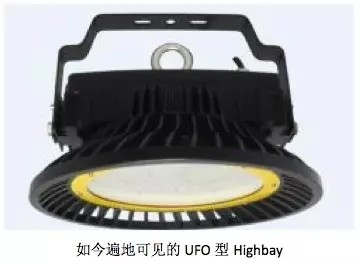This year's time is not good, many bosses around have complained that the business is not good, are looking for a simple and easy product breakthrough. Industrial lighting, which has always been used as a side dish, has been flooded with water at the beginning of this year with the investment of several companies.
Since it is a simple and easy to implement package, the structure is too complicated to enter the boss's eyes. The "small" UFO radiator kits in the various radiators seem to stand out. At the show, you can see at least dozens of UFO-type Highbay companies.

As we all know, there are three major ways of heat transfer - conduction, convection, and radiation. We have more side which is quite a radiator manpower specialty products structure, a simple chat room for improvement to the current high-power LED Heat Sink on the design and application, may be present.
First, look at conduction.
Since such lamps generally do not directly contact the surrounding buildings, the conduction does not directly dissipate the heat generated by the light source and the power source into the surrounding environment, but it is still extremely important because it is to remove heat from the light source and The most direct way to take away the light source. Early high-power heat sink designs often overlooked this and blindly increased the fin area of ​​the heat sink, ignoring that heat was not transmitted to the fins at all. Therefore, the fin temperature of this type of heat sink is very low, as if the heat dissipation effect is outstanding, but a slightly more careful customer can find that the temperature of the light source solder joint is high and does not play the role of the heat sink.
We can further look at how to ensure the heat transfer efficiency of the heat sink from the basic formula of heat conduction.
φ=-λA*(dt/dx)
among them:
λ is the thermal conductivity;
A is the contact area;
dT/dx is a temperature gradient and can be briefly understood as the temperature difference;
Let's look back at the UFO-type Highbay radiator. The material is die-cast aluminum, and the grade is mostly ADC12. Its thermal conductivity is 96W/mK, which is not particularly prominent. However, since the die-casting process limits the cross-sectional area of ​​the fins to a large extent, no major problems are caused. In addition, it is a one-piece structure. In the whole process of heat conduction, there is only the thermal resistance of the contact between the aluminum substrate and the heat sink (the thermal resistance inside the light source and the thermal resistance between the light source and the aluminum substrate are different, and will not be discussed here). And the contact area is quite large, it can be said that it is not necessary to worry about the heat conduction problem.
However, there are several problems that can cause larger problems if not handled properly.
One is the flatness of the contact surface. The UFO type heat sink has a large size, and the internal stress and thermal deformation of the die casting process product are large. If the annealing and post-processing work cannot be performed, a little deformation will cause a large reduction in the contact area between the aluminum substrate and the heat sink. This has a major impact on heat conduction.
The second is the choice and use of heat transfer media. The heat transfer medium is the official name of the commonly used "thermal paste", which is often a small proportion of the BOM cost of the lamp. Many companies just apply a little on the gourd draw. In fact, the choice and use of the heat transfer medium has a great influence on the heat dissipation of the lamp. Even if the contact surface is processed, it is not flat enough under the magnifying glass. The heat transfer medium fills the gap between the contact surfaces very well. Since the thermal conductivity of air is really low, it is only 0.024 W/mK, so the position that is not directly contacted or not filled with the heat transfer medium is almost thermally insulated.
Although many companies are filled with a heat-conducting medium between the contact surfaces, since most of the heat-conducting medium itself has poor fluidity, it is not preferable to simply apply a little heat-conductive paste by manual or mechanical connection. The thermal conductivity of the common thermal medium is only 1W/mK, which is far lower than the thermal conductivity of the aluminum material. Therefore, the thinner the better the thermal medium is in the case of filling the gap. The ideal situation is to use a heat transfer medium of 1.8 W/mK or more and use a steel mesh to ensure uniformity and thickness, in order to fully exert the effect of the heat sink itself.
Wenzhou Hesheng Electronic Co., Ltd. , https://www.heshengelec.com
